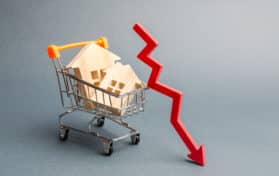
Everyone knows that inflation is rising, and this is happening not just throughout the country but everywhere in the world. Although the basic definition is easy enough to understand, as it means prices are going up, it’s much harder to understand why it happens and how to control it. Economists and experienced policy makers differ on the causes and solutions, so it’s little wonder that the general public may feel they don’t have the whole picture.
It is actually not that difficult to point to what seem like a few obvious causes of inflation, such as supply chain problems, pandemic woes and war in Ukraine. However, identifying other causes is more contentious. Most countries are grappling with inflation, but in the United States, it is particularly high compared to other major economies.
Some economists argue that this was due to the COVID relief packages that gave consumers extra money and drove demand. However, some other countries offered relief as well in various forms, but it did not drive their numbers as high as in the U.S. The U.S. did have one of the biggest responses in the world, but it is difficult to compare different approaches within dissimilar economies.
Perhaps surprisingly, while inflation is driving up the cost of college education and everything else, tuition has been outpacing it for years. No one can quite agree on why college costs are so high now, but everyone agrees it’s making it more and more difficult for people to get their degrees. However, there are ways to pay for those expenses, such as scholarships and federal aid.
Students can also take out private student loans, which are not need-based and may offer more money than federal loans do. In the U.S., inflation has been outpacing predictions about its growth. This means that any further predictions are not entirely reliable.
One effect of inflation is that it drives interest rates up since lenders are concerned about how much purchasing power the money they are repaid will have. Interest rates are also one of the tools that the Federal Reserve uses to control inflation, and they can raise those rates to slow spending. In a way, inflation is too much of a good thing.
The reason the words supply and demand are always seen together is that no one wants a lot of one and not enough of the other. When demand substantially outstrips supply, prices start to skyrocket. Eight times annually, the Federal Reserve publishes this assessment of the economy based on a number of different factors.The beige book released on September 7th predicted a weak economy overall in the year ahead although there is some growth. Job creation continues but at a slower pace than seen in July. The difficulty faced by the Federal Reserve in attempting to manage the economy is balancing unemployment and inflation. Jerome Powell, Chairman of the Federal Reserve, may opt to let the former rise in order to better control the latter.





